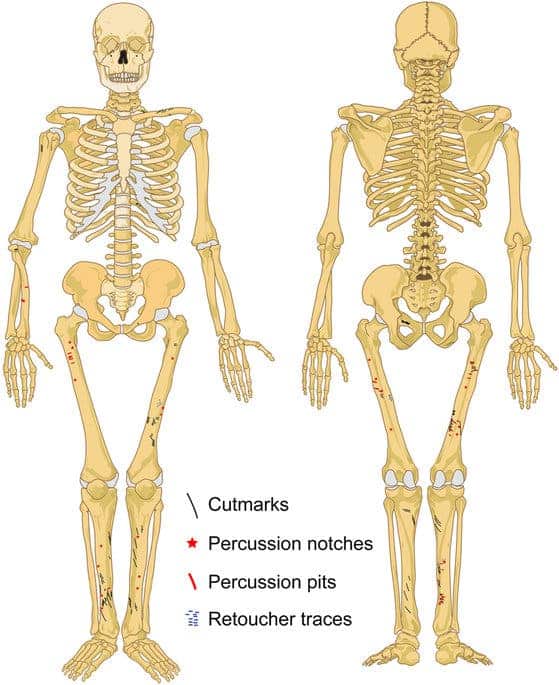
In the Goyet caves near Namur in Belgium, researchers made a gruesome find: Neanderthal bones which carried the marks of intentional butchering. Moreover, tools made from Neanderthal bones were also found, suggesting our hominid relatives didn’t frown from doing what’s necessary to survive in desperate times. They were also very practical about it, apparently.
This isn’t the first time Neanderthals were shown to engage in cannibalism. Eight 43,000-year-old Neanderthal skeletons excavated from an underground cave in El Sidrón, Spain in 2000 were filled marks and evidence that the bones were torn apart. These skeletons also bore teeth which showed evidence of periods of starvation or minimal nutrition, particularly during difficult life transitions like weaning or adolescence.

Something very similar was found in the caves from Belgium. Anthropologists report the remains show the victims were skinned, cut up and even had their bone marrow extracted. One thighbone and three shinbones were used to shape stone implements, similarly to how animal bones were fashioned. Nothing went to waste.
“These indications allow us to assume that the Neanderthals practised cannibalism. The many remains of horses and reindeer found in Goyet were processed the same way,” said Prof Hervé Bocherens, from the University of Tübingen in Germany.
The fact that some Neanderthals were cannibals shouldn’t be surprising — after all, they’re the closest extinct relatives to homo sapiens, and human cannibalism can happen to this day.
“Goyet not only provides the first unambiguous evidence of Neandertal cannibalism in Northern Europe, but also highlights considerable diversity in mortuary behaviour among the region’s late Neandertal population in the period immediately preceding their disappearance,” the scientists involved in the excavations said.
The findings were documented in the journal Nature.






